The metal fabrication industry as you probably already know consists of a lot of cutting, grinding, welding, metal bending.
Operating very dangerous machinery that might not seem as dangerous on the first look.
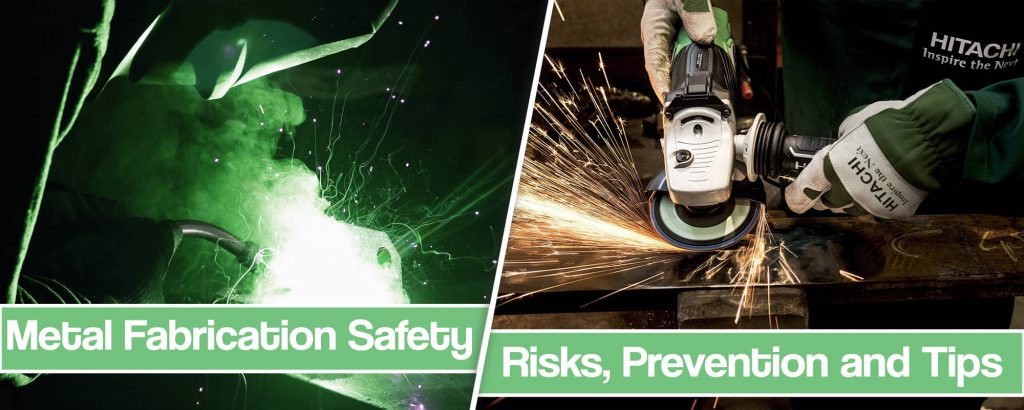
But you probably know someone or “a guy that knows a guy” that had a near-fatal accident using a grinder with a large cutting wheel or you have probably meet a welder with bad eyesight in its fifth year in the trade. And if you didn’t, the internet is full of gruesome accidents that fall upon workers or contractors in the workplace. You would not believe how quickly things can go from bad to worse in a matter of seconds.
Now, not looking at this from the health administration, company, or insurance perspective it should be common sense to take all of these (or at least some) safety measures and safety protocols seriously in your metal fabrication shop. This article will try to inform you on potential hazards as well as major injuries that can occur then help you to prevent those injuries by convincing you to sacrifice a little productivity or speed for safety.
Common welding and metal fabrication injuries and workplace accidents
We made a full article just on this subject that you can read here but we will also briefly mention some of the welding and metal fabrication injuries that can occur when disregarding workplace safety.
Using hand tools – These are probably most common. Grinders, cutters, drills, forging hammers, and welders are at the top of the OSHA statistics for safety violations related to preventable injuries.
Due to poor employee training and disregarding advice from dedicated safety professionals, a lot of people don’t use protective gloves or remove guards and side handle from abrasive wheel machinery (grinders mostly)
for easier handling or so they could fit them in hard-to-reach places but the grinder can easily bounce off and cut through your hand like a knife through hot butter.
And don’t think that the iron brush is safer, those cuts cant be patched up.
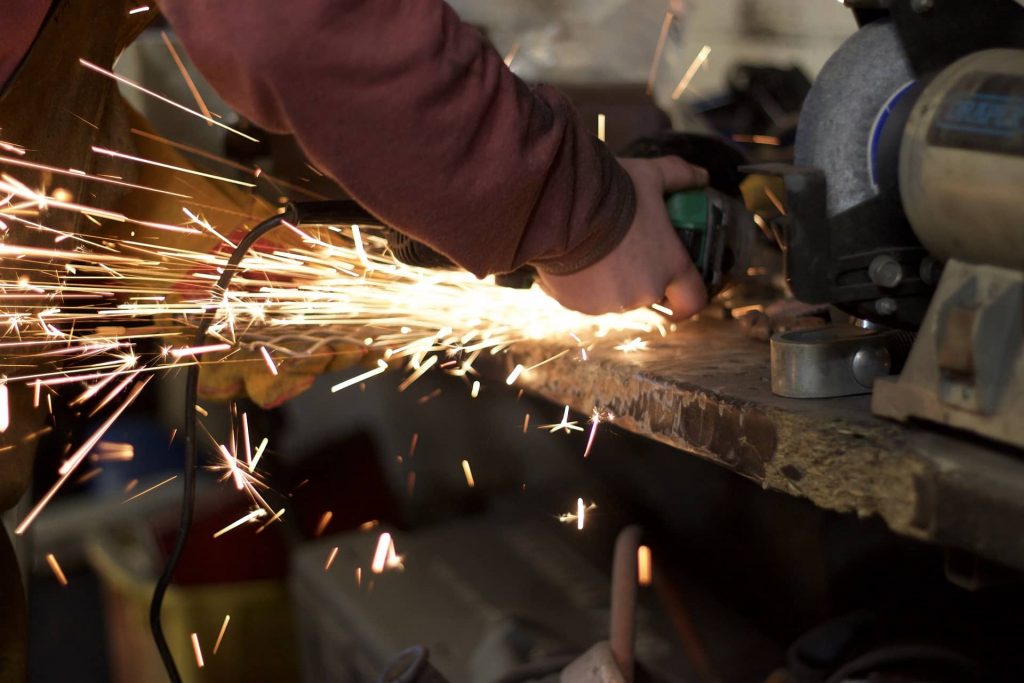
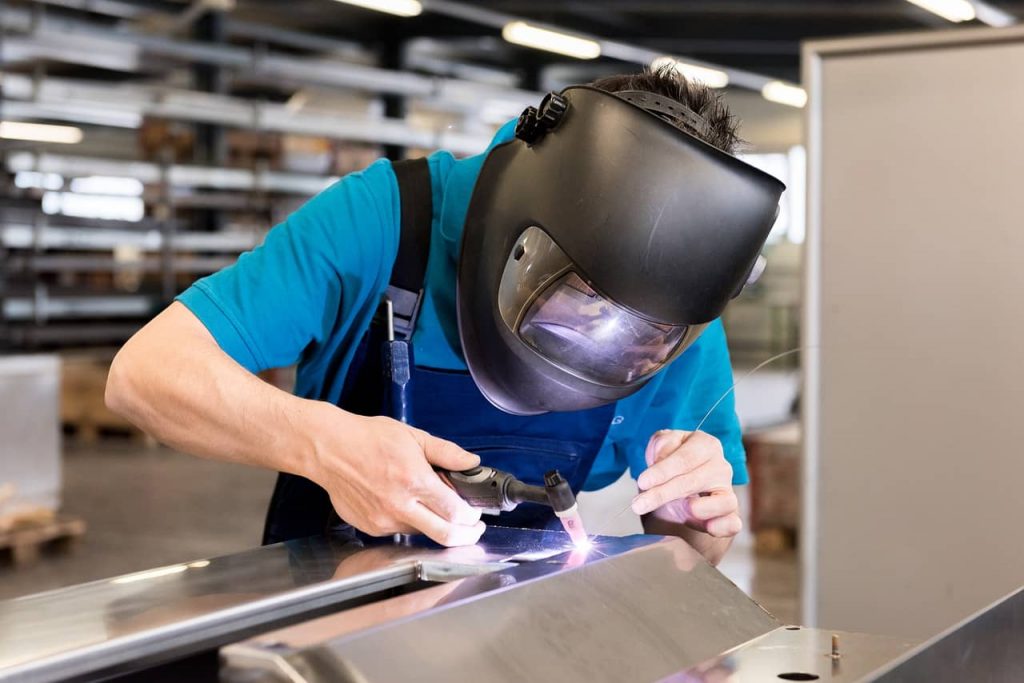
Poor Guarding and lack of safety equipment – Durning the metal fabrication processes lots of people don’t use all the personal protective equipment or they only use some.
These can vary depending on the work you do or where, or on what are you working. From Helmets, gloves, boots, face shields, protective glasses welding helmets, aprons, and respirators. All of these have their use and are essential in an effort to prevent injuries.
On a hot day with extreme temperatures, you might be tempted to remove the abrasive wheel machinery (face shield or protective glasses).
The visor will get foggy and the visibility will become low but it’s better to constantly wipe the fog off than to remove the face protection.It also counts for a welding helmet, don’t weld without it even it’s just a few tacks.
Handling Materials – These injuries are often the result of improper lifting techniques. They also happened when not wearing PPE hand protection like safety gloves and harden boots. Not operating a cran properly and other distractions.
Asbestos Exposure
Asbestos is a fibrous mineral that is widely used in industry due to its physical and chemical properties. Amongst its other advantageous properties, asbestos shows excellent resistance to heat, wear, alkalis, acids, and flexibility. These make it widely used in insulation, industrial textiles, and many other fields.
However, when asbestos is disturbed, either in its natural form or in an asbestos-containing product, these fibers can become airborne and be easily inhaled. Asbestos fibers may become trapped in the lungs, potentially causing several life-threatening diseases, including lung cancer, ovary and larynx, and mesothelioma.
Mesothelioma is a form of cancer primarily caused by exposure to asbestos. This fast-growing cancer is almost always caused by exposure to asbestos. According to a 2022 report by the European Commission, over 70,000 workers died in 2019 from past asbestos exposure, and there is currently no cure for this disease. However, some treatments help people live longer.
Welders come across asbestos particles by cutting, sawing, or even disturbing asbestos-treated products. Welding metal sheets, installing metal studs, and drilling into asbestos cement often put more fibers into the air.
Safety concerns and tips on reducing sheet metal injuries for metal fabricators
A). Identify any risks and safety concerns beforehand
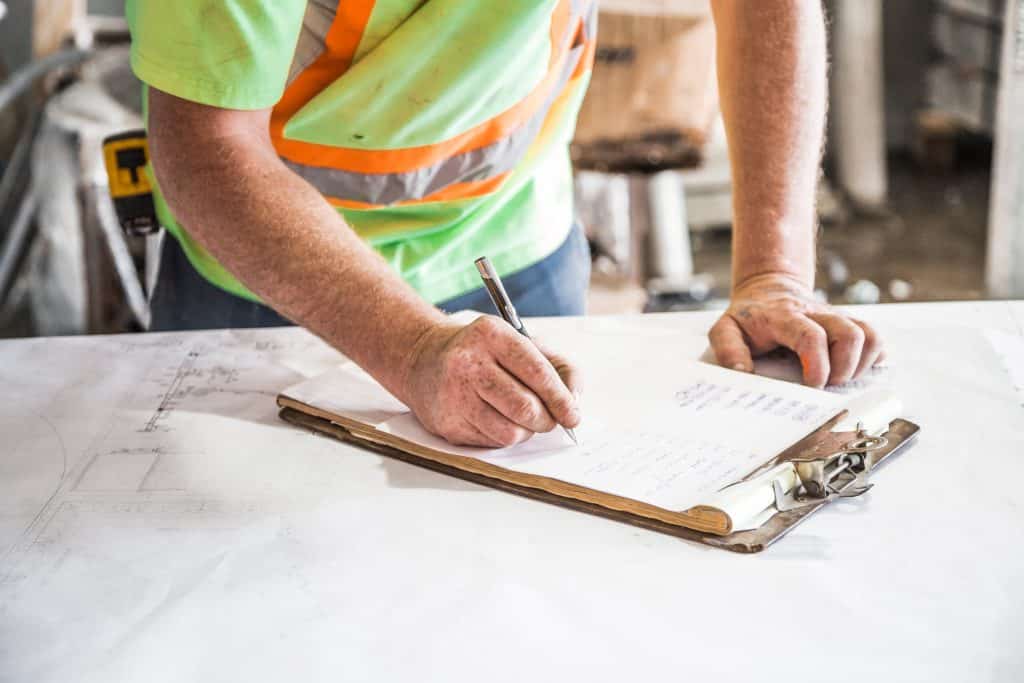
In order to improve workplace safety, risk assessments need to be made. Identifying problems in advance and solving them before they happen saves worker’s health and resources.
Having a proper protocol order also includes figuring out the entire safety aspect of the metal fabrication process. This includes things like employee state of mind, the leadership and its involvement in the safety, the entire safety culture and etc.
Few tips on worker safety; risk assessment and avoiding injuries
- Determining the hazards and occupational safety: This process should be integral for you or your workers if you have any. occupational hazards hide can hide in most benign things like messy power or welding cables to dangerous machinery, just the mechanical power presses alone took more fingers than African warlords.
- Identifying which workers have the highest chance of injury and during which process: Examine the entire fabrication line and find a primary risk. Figure out which worker is exposed to the most dangerous processes and machines. Any mechanical power-transmission apparatus or abrasive wheel machinery or any other heavy equipment should have a safety machine guarding between the operator/you and the dangerous machine part. These have machinery can cause fatal injuries and the crushed fingers will be the last thing to worry about. Just a lathe can cut you to pieces.
- Weighing out the risks and determining safety measures: Arguably the most important part of the process. Figuring out exactly what is the safety protocol doesn’t harm your worker’s workflow, productivity and that they actually feel safe and willing to implement.
1. Employee awareness and state of mind
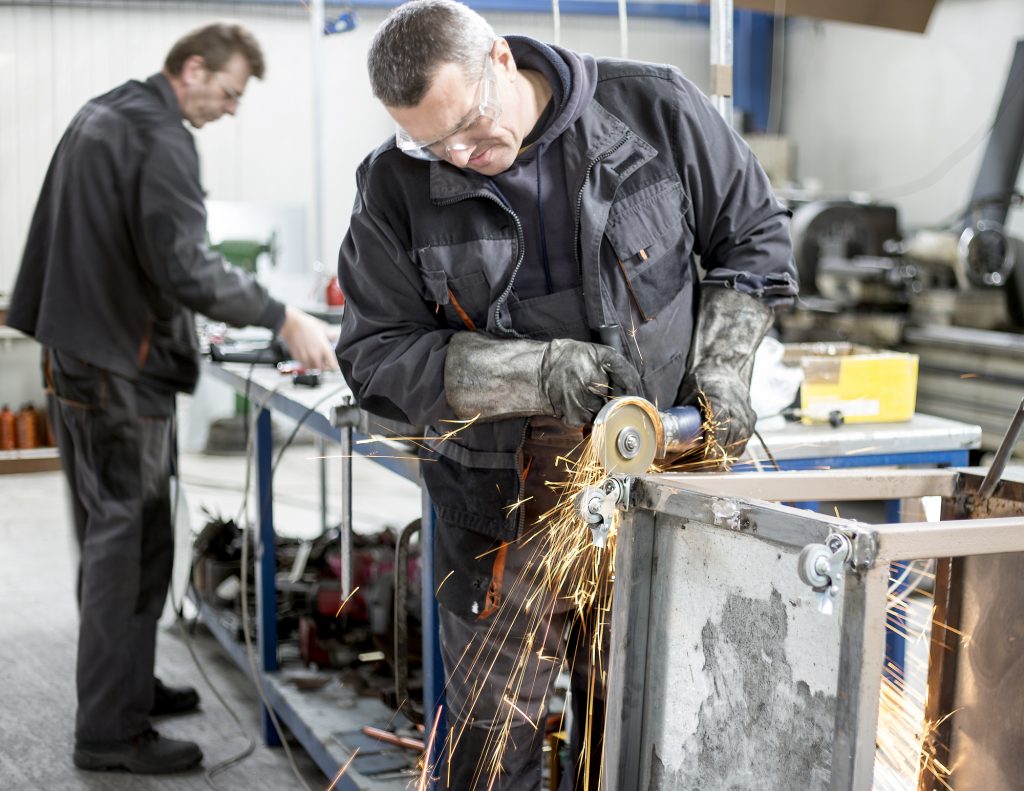
Human factor training has a direct correlation with incident prevention. It is paramount for metal fabrication safety that employees demonstrate personal awareness of their physical surroundings and their state of mind. When this is the case the workers are much less likely to sustain injuries on the job.
On a completely different end if the employees don’t have the proper state of mind and are unable to assess their surroundings, their own state of mind, and overall awareness of their actions and upcoming actions the situation looks a lot different. This happens if the metal fabrication workers are feeling rushed, fatigued, frustrated and if the work protocol is so unaligned with the expectations that they have to start taking shortcuts in order to finish their work. Committed workers turn to carelessness if the work organization is bad and everything is rushed.
Fabricating metal requires a lot of heavy lifting and manual material handling. Work conditions are usually hard to endure regardless of how much effort is placed to make everything run smoothly. That’s why this line of work requires as much focus on safety features as possible. Even if accidents are avoided, the regular day-to-day work can cause injuries like shoulder and back injuries.
Improving the worker’s awareness and state of mind can significantly improve things. Proper training, excellent safety culture, staff meetings and safety communications play the major role but having your workers understand the impact of the human factor also plays a major role.
If trained metal fabrication workers understand how and why rushing to get things done, built-up frustration, losing focus, underestimating the dangers associated with the task, not using PPE, improper use of machinery and others lead to injuries and accidents, the workers will become more aware of their aspect of the responsibility of keeping the work area safe and functioning.
When this approach is further paired with good communication between the trained workers and their superiors everybody wins. If workers have a good state of mind and awareness of how a human factor can cause problems they can be better at communicating the issues they face first hand and then the safety protocols can be improved.
The company’s management should help its employees improve their situational awareness and overall safety awareness. That way they will know how their work can pose danger to themselves and others if it is not performed properly.
2. PPE and Lack of guards and other protection
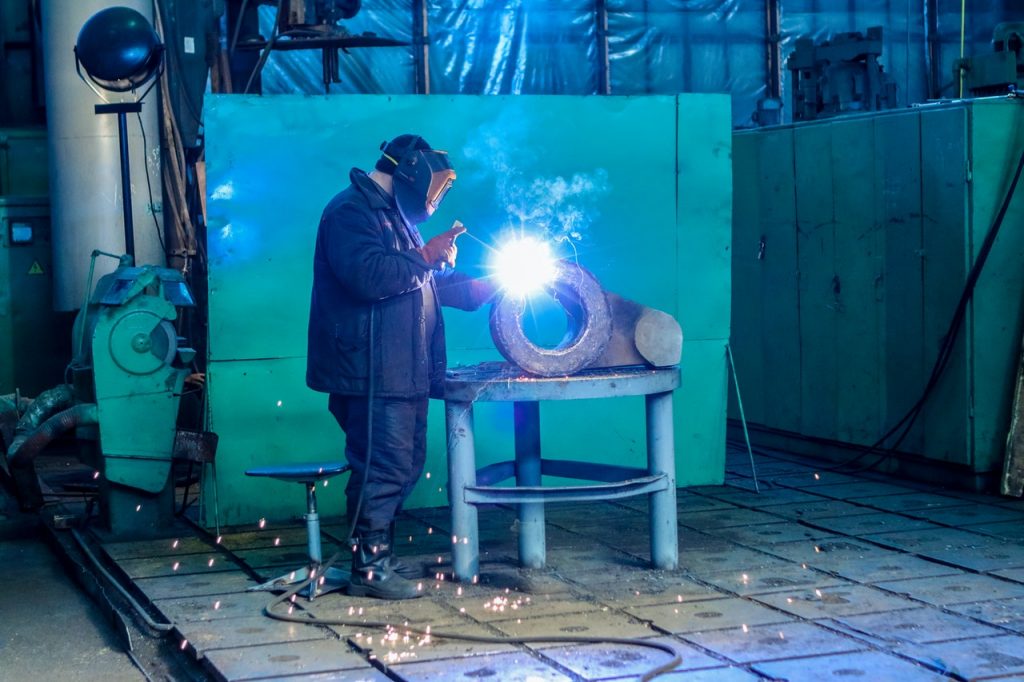
When you work for the company they will most of the time provide you with the personal protection equipment (PPE) that is within OSHA standards.
Depending on the workplace the safety equipment will vary from respiratory protection, foot protection, ear/noise protection, helmets, gloves, and others. But keep in mind that they are doing it for insurance purposes and because they don’t want to get sued.
Many times and this counts if you are working from home in your shop, the PPE will not be adequate and its a good practice to invest in safer equipment for example in a better welding helmet or leather gloves with long sleeves or a proper respirator if you are working on specific hazards or welding /cutting metal alloys that radiate hazardous fumes.
3. Insufficient or inconsistent training and OSHA standards
When a company hires new workers they will provide them with general safety training so that they learn what are the safety standards in the workplace. That is a good way to start but not a good way to end safety education.
If you have your own metal fabrication then just as the big companies do, you must continuously educate yourself and your apprentices/employees on the safety standards. There needs to be a consistent dialog about the day-to-day tasks and their safety aspect.
The safety levels need to be sufficient for the tasks at hand. The best place to start is to abide by all of the OSHA standards and then improve upon them to make your specific fabrication facility workplace even safer. But in most cases abiding by OSHA standards will keep your welding shop safe and functioning like clockwork.
4. Compromised safety culture
Whether your organization is big or small. Metal fabrication factory or a small welding shop that does fab work as a contractor. You can’t compromise on safety culture.
Everyone needs to do their part and to do it willingly. Wanting to make your operations workplace safer is half the battle and the other half is actually putting that in practice every day.
You must lead by example. Be there constantly with your workers and never compromise on the rules you set in place. Make talking about the safety aspect of the work a normal phenomenon that happens on the regular. This is the job of employers. supervisors and managers.
If you are however a very small welding shop. Maybe it’s just you as a fabricator and no one else for now. In that case, you should follow a strict protocol for yourself. As you employ other people, share what you learned and build upon from there.
5. Electrical Safety Standards
Electrical hazards in metal fabrication are one of the leading causes of accidents and injuries. The worst thing about this hazard is that it can often end with dire outcomes like death or severe injuries.
On average one metal fabrication worker dies per day from electrocution in the USA. There is no safe electricity unless the safety standards are put in practice. Even a low current or low voltage electroshock can result in serious injury or death.
For the purpose of metal fabrication safety, you need to make sure that the entire electricity pathway is safe and follows the necessary laws and standards. This includes everything from the power source to the hand tools that use it.
The most common safety violations are improper grounding, poor extension cord safety, lockout/Tagout issues, guarding, wiring design, and poor protection. The workers that use electricity-powered equipment, hand tools, and those responsible for handling electrical issues are the most susceptible to injury.
B). Safety Tips for welding in the metal fabrication industry
Now we will talk about more specific things that are directly related to the welding aspect of metal fabrication safety.
Here is a good video explaining some of the OSHA welding safety standards:
You will learn about things that you can start implementing right away and about things that may require an investment on your part like the installation of proper welding fumes extraction system if the situation calls for it.
Let’s get right into it.
1. Identify any risks beforehand
Just like with any aspect of metal fabrication work you have to prevent injury in advance wherever possible.
Welding is probably the most important aspect where identification of risks is important. That is because of the inherent danger of the welding work.
You are working with dangerous equipment that uses either explosive gasses or high amperage power outputs, the work itself has a byproduct of high heat, arc flashes, UV radiation, dangerous fumes and etc. This is no picnic.
Here is a helpful checklist that you should refer to when preventing injuries in advance. Keep in mind that this is a starting point and that you should tailor it in accordance with your specific work and conditions you are working in.
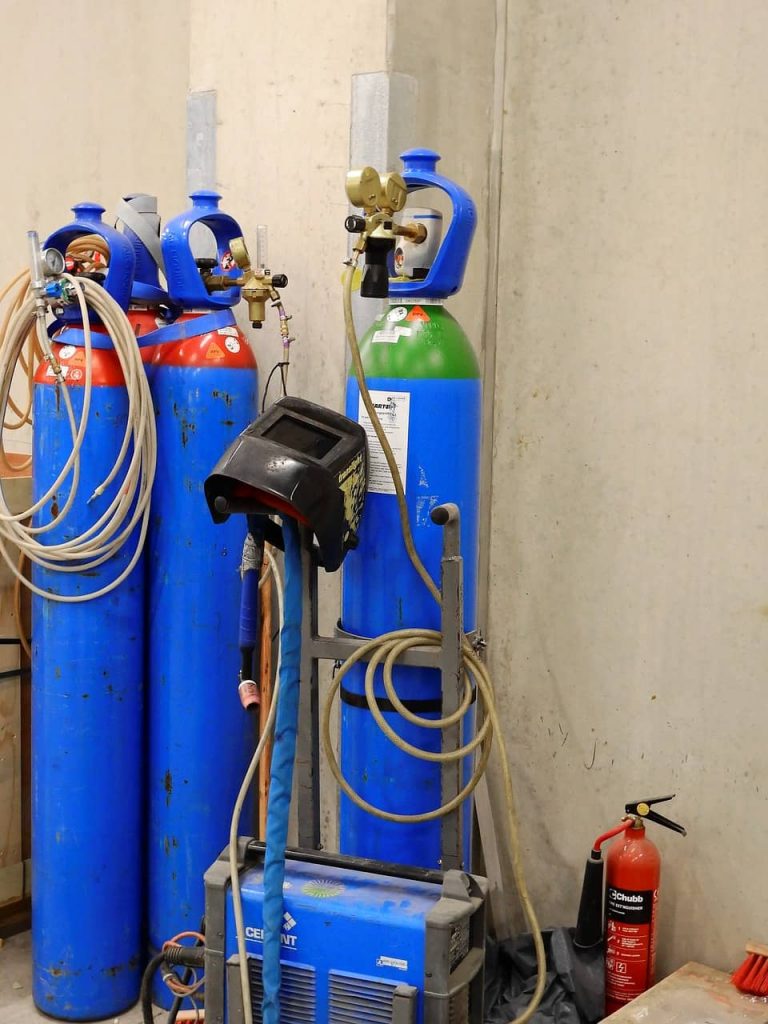
- Make sure that hoses that supply welding gas needed for Oxy cutting and welding are not damaged. They also must be set properly and not mixed up.
- The pathway to the main electricity kill switch must be clear at all times. In case of emergency, you want to be able to immediately pull it.
- Make sure that there are no flammable materials in the area where the welding work takes place.
- There has to be sufficient airflow and ventilation. If you are welding inside, the windows must be open and large enough to let enough of the fresh air inside. Refer to the regulations in your area to get the exact window area requirements. If you don’t have the windows then you must install the necessary fume extraction systems.
- Prior to welding make sure that the windows are open or that the fume extraction system is operational.
- Make sure that the work area has sufficient illumination.
- Before laying your beads make sure that your welding hood works by looking at the light bulb through it.
- If there are more welders working in one area make sure that you have welding separators in place so that you don’t arc flash each other. This will reduce injuries and strain on the eyes.
- If you are tired and feeling sleepy it is best to stop all work but you should definitely avoid any work involving a grinder or metal press for bending and cutting metal.
- If you are working on a construction site, make sure that the cables are not in water.
- If the job at hand is related to vehicle welding, prevent any welding sparks from falling where they shouldn’t. It is best to remove the car part being welded if possible and to work on it away from the vehicle.
- After you are done with work make sure that the welding machines are powered off and removed from the power source (plugged out from the electric outlet). Also, make sure that all of the gas cylinders are closed shut.
- Place cylinders with oxygen and acetylene in a safe area after you are done using them.
Don’t forget to be alert when making your risk assessment. Just because today’s job is similar to something you worked on hundreds of times until now you should still be “present” and actively consider if something else should be considered safety-wise.
That is the point of risk assessment – to think about the risks and prevent them, not to rely on the passive assessment based on habitual experiences alone.
2. Ensure that guidelines and hazard signs are visible at all times.
Every part of the work area needs to have visual access to the safety guidelines and hazard signs. Nothing should be placed over them or obstruct their visual presence in the work area.
Everything that needs to be marked for safety reasons should be marked. Especially any dangerous area.
The welding area needs to be clearly marked and there should be additional warning signs if necessary. For example, if there is some overhead welding being done, there needs to be a sign that specifically states that in that area welding may be happening above the head.
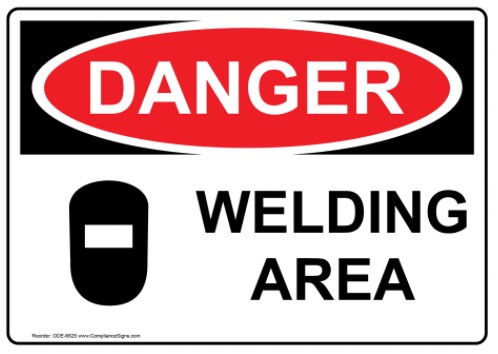
No welding allowed in the area is also an important sign. Especially if that area contains flammable or otherwise dangerous chemicals, materials or equipment. Additionally, it is the area that clearly states to other workers that they are safe from welding-related work.
There are a lot of signs that are needed including the arc flash hazard for high voltage equipment that strictly says that you must disconnect the main power before servicing such equipment.
Guidelines and hazard signs saved a lot of lives and continue to do so. Make sure that they are put up in highly visible spots and that they are never obstructed and your metal fabrication work will have fewer incidents.
3. Supply personal protective equipment and Provide proper training for your employees.
Everyone involved in welding work in metal fabrication needs to have adequate personal protective equipment for their role and more importantly, they need to have the training for proper use of it.
You can have the best welding helmet in the world but it won’t do you much good if you are using it wrong because of insufficient employee training.
Depending on the welding process being used the welder’s personal protection equipment will vary quite a lot.
Stick or flux core arc welding will require much more serious equipment than TIG welding for example. This means that the welder needs to be protected in accordance with the amount of exposure to heat, sparks, molten drops, fumes, and UV radiation. Additionally, it is important to assess and protect accordingly against chemical burns, electric shocks, physical injuries like puncture wounds and etc.
Just because someone’s job is to weld doesn’t mean that they shouldn’t be protected from electrocution or being cut on sharp metals.
Here is a nice video from Tulsa Welding School about personal protective equipment. They explain it nicely and in a concise manner so that even a beginner can understand.
The safety equipment checklist for welders includes:
- Welding helmet
- Welding jacket, gloves, boots, and apron.
- Eye protection from physical damage like face shields or safety glasses.
- Welding respirator
- Welding goggles
- Earmuffs
- Hard hat
- All of the above needs to be flame resistant/retardant and non-conductive.
This is a basic checklist. All of the items have different levels of protection depending on the material they are made of and depending on the type of work being done in your metal fabrication business the welders will need different grades of protection.
In our article about welding safety equipment, we broke down the equipment in detail. That way you can easily conclude what is and is not necessary for your work.
4. Install fume extraction systems.
Welding fumes pose an extreme health hazard. For the purpose of discussing metal fabrication safety, we have to assume that you may be working with stainless steel, various non-ferrous materials, galvanized steel and etc. The degree of danger from inhaling the welding fumes largely depends on the materials being welded and electrodes being used but there are other factors as well.
If you are welding inside and you don’t have enough airflow from open windows you will need a good fume extraction system. Even if you have large enough windows, depending on the climate where you are located, you will still need a fume extraction system. You can’t keep windows open if it is too cold or hot outside.
If your welding operation is large enough then you will need a system regardless of the natural airflow. Some areas mandate that you have a fume extraction system in place. When you take all of this together, you will see that avoiding a system like this can be difficult and unsafe for your well-being.
Here is a good video from Kevin Caron, a youtube welder, and artist that has his own shop. He did a little presentation of how well a fume extractor works and what you can expect when it comes to suction power.
The amount of work the fume extractor needs to handle depends on the size of your welding operation and the volume of fumes being made. If you have multiple welding boots and they are operational 24/7 you will likely need a powerful system.
But if you have a few welding machines and they are not constantly being used then you can get by with a smaller system. Maybe even a portable small fume extractor.
5. Conduct regular inspections and maintenance
Everything is working great in your metal fabrication welding facility. There hasn’t been an incident in a long time, workers are productive and things are running smoothly. You can now focus completely on the work itself, your own affairs, and maybe play a round of angry birds on your break. Right?
Wrong.
Nothing will ever function perfectly and especially without constant attention to the basics and the details of the work.
In order to keep things running smoothly and be incident-free, you must constantly be vigilant. There needs to be a plan for regular inspection of the work area, the worker’s attentiveness to safety protocols, the type of work being done (don’t let yourself be sidetracked and not notice a new material or a welding process being used in your shop without a safety protocol covering it), the PPE quality, equipment quality and the safety protocol itself (like a regular revision and discussion).
The equipment needs to be properly maintained in order to avoid any accidents. See the list below for the tips on what to look for when it comes to equipment damage:
- Regularly check oxy acetylene hoses, gas regulators and flashback arresters.
- Check the condition and maintain welding machines. Do they overheat? Are all of their functions working? For example, if you have a multiprocess machine that does TIG, MIG, Stick and Flux and now some settings don’t work anymore. That’s a potential issue that needs to be addressed.
- Check the condition of welding peripherals like MIG guns and electrode holders. Are electrode holders damaged? That can happen if they get dropped and the bare metal gets exposed that carries electricity.
- Are all cables in the work area in healthy condition without any breaks or tears in insulation? Are welding leads in good condition?
- Regularly check electrical outlets for cleanliness and damage. If the outlet is damaged, loose or filthy with metal dust/grease/oils/others don’t use it until it is restored to a safe condition.
- Your fume extracting system may need filter change so don’t skip on it.
- Changing welding respirator filters regularly is a must. Make sure your workers do it.
- Regularly check the condition of PPE of your workers. Are welding hoods damaged? Are there holes in their protective clothes? Is there damage to the rubber soles or the met-guards of the workboots? If the equipment becomes suboptimal it needs to be replaced.
- Is everything functional in your main power plug? Can the electricity be cut off immediately? Nothing preventing the pathway to it?
- Regularly speak to everyone in the welding area about welding safety. Make sure they still understand and follow the safety protocol of working with the equipment.
6. Wear Protective Clothes
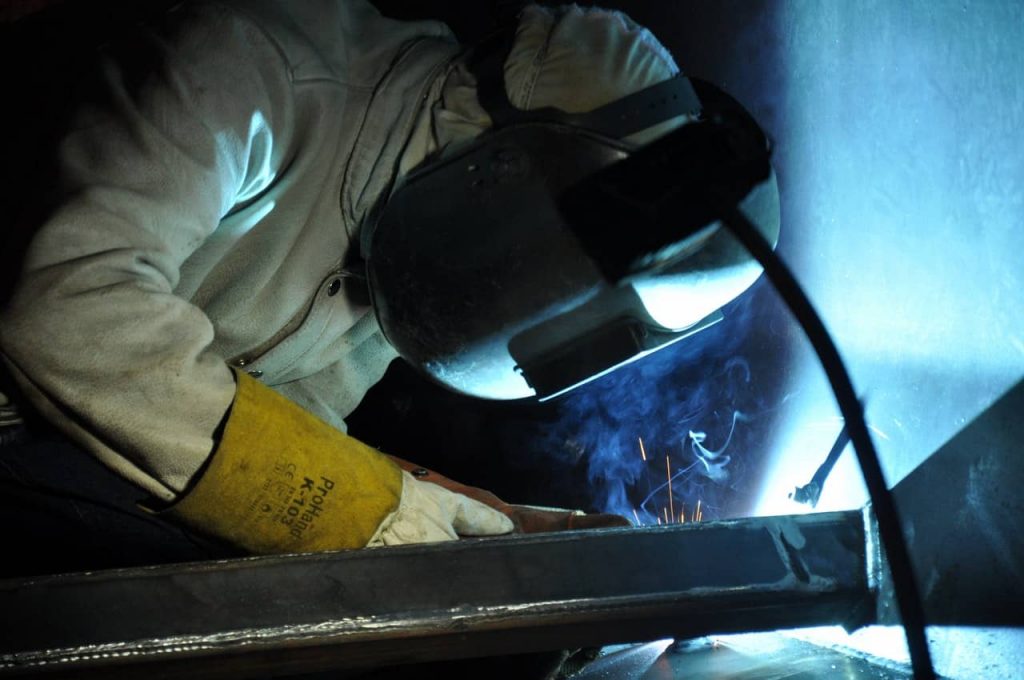
We outlined what PPE is needed above but here are some practical safety tips when it comes to wearing protective clothes for welding.
First of all, you should wear protective clothes that are suitable for the metal fabrication work at hand. If you do TIG welding then it is not a good idea to overprotect yourself and wear protective clothing as if you were doing flux core or stick welding.
There are many different materials for protective clothing but it mainly comes down to cotton and leather. Leather offers more protection while cotton is lighter and lets your skin breathe.
If you are working with high heat and in more dangerous conditions make sure that no part of your skin is exposed. This includes the ears and the neck area.
Your protective clothing shouldn’t have crevices, cuffs or pockets that can catch a slag or a piece of molten metal.
If you are welding outside and its cold you shouldn’t overdress because if your clothes soak in sweat and become wet you will lose body heat rapidly.
The clothes you wear must be properly sized. Don’t wear loose or tight clothing. Failing to get properly sized welding clothing can impair your ability to act quickly if necessary, you could lose balance and your work will suffer.
7. Prevent damage to the gas cylinder and protect the gas hoses
One of the most important things to pay attention to in the metal fabrication shop are the gas cylinders. Especially those containing Oxygen and Acetylene gasses.
Cylinders need to be handled with care and in accordance with your local jurisdiction laws. Here are some useful tips that will help prevent any damage to the gas cylinders and the gas hoses:
- Cylinders need to be stored in a dedicated area that is not exposed to sun heat.
- They need to be stored in the upright position regardless if they are empty or full. Secure them with an insulated chain or a non-conductive belt.
- Cylinders need to be protected against contact with water, ice, snow, salt, corrosion, high temperatures and ground.
- Consider securing each cylinder individually with a chain in order to provide additional safety protection from falling.
- Never use cylinders as an electrical ground connection or to strike an arc on them.
- Never use boiling water or flame to thaw a frozen valve. They may contain fusible plugs which melt at temperatures below the water’s boiling point.
- Don’t use physical force or pry bars under valves to pry cylinders loose if they are frozen to the ground. You can use warm water instead.
- Don’t use full or empty cylinders as roller support.
- When the cylinder is not in use remove the gas regulator and store it away from grease, dust and oil. Place the protective caps on the fittings when in storage. Make sure the cylinders and fittings are not contaminated with dust, oil and grease.
- When moving your cylinders use adequate trolleys and secure them in the upright position. Never drag, drop or slide the cylinders.
- Prevent any sort of violent collision between the cylinders.
- Don’t lift cylinders by their valve caps.
- Don’t sling them with ropes, chains or have them lifted with electromagnets.
- Protect hoses and cylinders from sparks, slag, flames, hot metal and sharp edges.
- Don’t keep hoses on the ground where they can get stepped on. Prevent any heavy objects from falling on them.
- Once you are done with using the cylinders properly store them and the hoses to their storage area. Close cylinder valves, bleed the lines to take pressure off from the regulators and neatly coil the hoses.
If you wish to a few more details, here is a an excellent video from David. He gives a really good explanation for oxygen and acetylene cylnders by focusing on their physical properties, valves and gasses.
Areas of High Welding Safety Risk In Metal Fabrication Shop
With all of the safety precautions we talked so far here are some the highest welding safety risks that you can expect.
- Electrocution
- Welders or other people in the area exposed to arc flash
- Exposure to dangerous fumes like carbon monoxide
- Excessive noise
- Poor ventilation
- Welding in difficult and dangerous positions can lead to musculoskeletal disorders
- Injuries related to grinding and cutting
These welding risks can be reduced by using proper PPE and handling the equipment properly and by proper work area organization.
Electrocution is one of the most dangerous safety risks but it can easily be associated with excessive noise and poor PPE for example. If a worker is frustrated or at a loss of focus because of poor noise management they may make a mistake and get electroshocked. Or if their PPE is not sufficient or damaged the same can happen.
You should organize the work area so that the welders can work independently from one another by physically dividing their work. Welding booths can be a good idea and especially if you don’t need multiple welders to work on a piece at once.
Conclusion
This was a detailed look at metal fabrication shop safety measures you can take to make a safe workplace. Different industries can have different practices and procedures but these are the general requirements of making a safe work area.
Remember to always abide by the codes, safety regulations and standards set in your area but to also go beyond them. If your workplace is safer than someone else’s that is a competitive advantage. You don’t want to have an injured workforce, to be paying injury fines, medical bills and you do want your workers to be healthy, happy and productive. After all, these are your duties as an employer.
Even if you are a one-man army in your shop you still want to avoid an injury and be as productive as possible. Eventually, you will hire metal workers to help you out so you should develop a good safety culture.
Resources:
- Welding, Cutting, and Brazing by OSHA – Occupational Safety & Health Administration
- OSHA Welding Safety Requirements and Checklist at www.safetybydesigninc.com
- OSHA shines spotlight on metal fabricating at www.thefabricator.com
- 4 Major Safety Issues for the Metal Fabrication Industry at safestart.com
- Workshop self inspecting checklist by the University of Edinburgh
- Safety in Welding, Cutting, and Allied Processes ANSI Z49.1:2012 An American National Standard
- Five Potential Welding Safety Hazards to Avoid by www.lincolnelectric.com
- OSHA Welding Signs and Labels at www.compliancesigns.com




